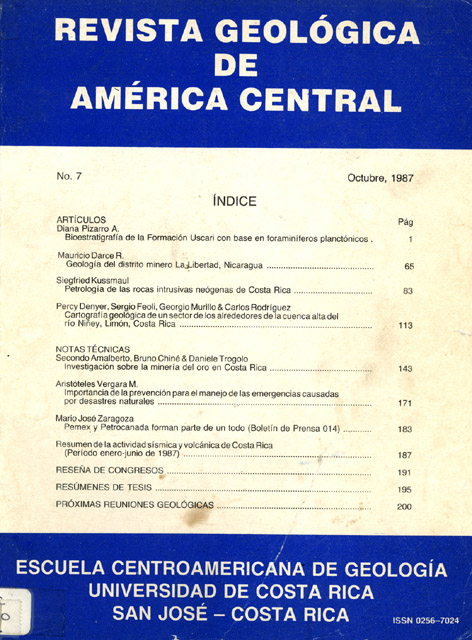Abstract
La Libertad mining district is located 120 km east of Managua. The major geologic units in the region are two volcanic sequences which have been assigned to the Coyol and Matagalpa Groups, of Miocene-Pliocene and Oligocene-Miocene age, respectively. The El Caracol Formation (Paleocene-Eocene), consisting of shales and cherts, is the oldest unit cropping out in the region, and is assigned to the Upper pre-Matagalpa Group. The predominant structural trend in the region, shown by fractures, quartz veins and alignment ot intrusives, is NE-S transvereal (NW-SE) faults have produced block movements with differential uplift. The combination of the NE-SW and NW-SE lineaments may have controlled the formation of circular structure of caldera-type. Structures of this type have probably favored the formation of the epithermal gold-bearing quartz veins in the La Libertad district. The veins are hosted by altered rocks of the Lower Coyol un: and are block faulted along the NW-SE normal faults. The upper of the gold mineralization, probably the richest, has largely been eroded in most of the blocks. The gold occurs as electrum and is associated with pyrite. The geothermal field type of alteration in the volcanic rocks of the mining district (laumontite-swelling chlorite-quartz-calcite) suggests a higher temperature than the cheulandite/mordenite-cristobalite-smectite) burial diagenotic assemblages characterizing the rocks outside the district.






